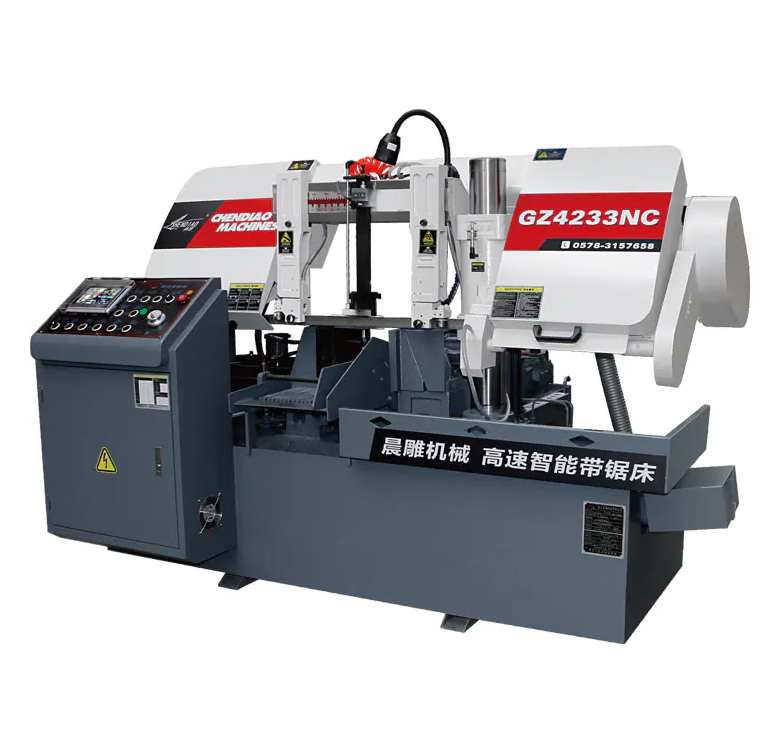The Role of Advanced Band Saw Machines in Delivering Consistent Precision with Different Metals

When discussing the performance of a CNC Intelligent Metal Cutting Band Saw Machine in terms of precision across different metal materials, the key factor is how the system integrates cutting parameters, blade control, and intelligent adjustment. Metals differ significantly in hardness, density, and structural properties, which directly influence how precisely they can be cut. Softer metals like aluminum require a different blade approach than harder materials such as stainless steel or titanium, and without proper adaptability, accuracy can be compromised. Advanced machines address this challenge by incorporating high-level control over speed, feed rate, and blade tension, allowing them to tailor cutting conditions to the specific metal being processed.
Precision in metal cutting is not only about achieving clean and straight edges but also about maintaining consistency when parts are produced in large volumes. The more intelligent the system, the better it can compensate for variables such as blade wear, material vibration, or differences in workpiece thickness. For instance, when cutting hard alloys, precision depends on ensuring the blade remains stable and resists deflection, while in softer metals, precision may depend on controlling cutting speed to prevent burr formation. Modern intelligent machines often feature sensor feedback loops that monitor cutting progress in real time and make micro-adjustments to maintain accuracy, which significantly reduces human error and ensures repeatable results.
Another critical factor in achieving high precision across diverse materials is the quality of the blade and how the machine interacts with it. Carbide-tipped blades, for example, are effective for high-strength materials, while bi-metal blades can provide a balance between durability and flexibility. A sophisticated band saw system does not treat all blades the same; instead, it adjusts its operation according to the blade characteristics and the metal being cut. By integrating this adaptability, the machine ensures that accuracy is not lost when switching between materials of varying toughness or thickness.
Moreover, precision also relies on stability in clamping and guiding mechanisms. Even the most advanced cutting algorithms cannot compensate for excessive vibration or poor material handling. Therefore, intelligent saw machines combine robust mechanical stability with digital control to enhance precision. This balance allows operators to cut thin aluminum sheets without deformation while also handling thick steel beams with straight and reliable edges. In industries like aerospace or automotive manufacturing, where tolerances are extremely tight, such accuracy directly influences product quality and safety.
In conclusion, the precision of cutting different metal materials depends largely on the design and adaptability of the machine. Advanced sawing systems are developed to provide flexibility and maintain accuracy regardless of whether the task involves light metals, structural steels, or exotic alloys. By combining intelligent software, real-time monitoring, stable mechanical design, and compatibility with different blade technologies, these machines ensure consistent precision across a wide spectrum of applications. For modern manufacturers, this capability represents not only improved productivity but also the confidence that every cut, regardless of the material, will meet the highest standards of accuracy
Cutting Range(mm): Φ330■330×330
Blade Specifications(mm): 4115×34×1.1
Feeding Speed: Stepless Speed Control
Saw Blade Speed(m/min): 25.39.56.76
Total Power(kw): 4.79
Fastening Mode: Hydraulic
Overall Size(mm): 2100×2000×1400
- Art
- Causes
- Crafts
- Dance
- Drinks
- Film
- Fitness
- Food
- Spiele
- Gardening
- Health
- Startseite
- Literature
- Musik
- Networking
- Andere
- Party
- Religion
- Shopping
- Sports
- Theater
- Wellness


